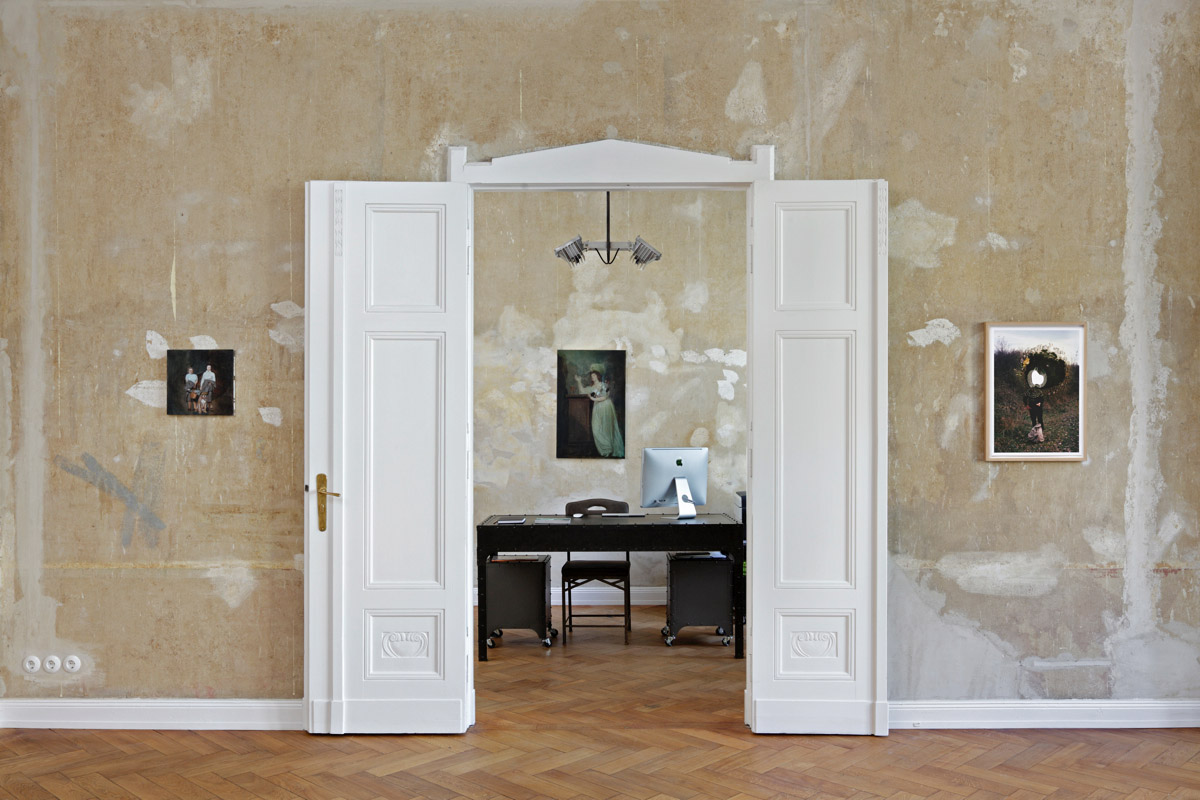-
| > More information about Ross Chisholm |
Ross ChisholmMan Directing WaterOctober 9 – December 18, 2010 |
 |
Ross Chisholm Man Directing Water October 9 – December 18, 2010 |
| Press Release English Pressetext Deutsch Opening hours: Friday and Saturday 14h00 – 18h00 and by prior arrangement
Grieder Contemporary is delighted to present British artist Ross Chisholm’s first ever solo exhibition in Berlin, entitled Man Directing Water. Chisholm’s practice is characterized by a deep exploration into the language of painting, through a deconstruction of the medium’s conventions, and the creation of composite worlds, where time, place and memory collapse. Chisholm’s practice departs from painting conventions, such as portraiture, photorealism and abstraction, which are investigated and reconfigured to present layered complex assemblages of meaning and reality. The source material he uses come from disparate points in time, and invariably include society portraits from the 18th century sourced from catalogue and print reproductions, as well as slides from the latter half of the 20th century found in second-hand markets. Chisholm selects, edits and mashes up figures and landscapes from such incongruent sources, as in the case of the use of bourgeois ladies from two different 1770s Reynolds paintings (Seminal Lloyd, 2010, Delme Flux, 2010 and Plinth 2010, 2010), and members of different quintessentially English families on holiday from found slides (British People in Hot Weather, 2010). These are figures, which, even if not known to the viewer, at least bring out a sense of familiarity. Any sense of familiarity or nostalgia however is fragmented and nonsensical, as dissimilar referential images are brought together, figures are often cut off, disjointed or displaced, and styles are inconsistent and change within and between paintings. The resulting, often strange, composite worlds bring about a sense of collapse of time, place and memory. From a painterly perspective, Chisholm manages to shift from luscious figurative portraiture to abstract and minimal backgrounds to photorealistic ‘interventions’ with skill and confidence. Such incongruent styles are brought together on the surface of the canvas, and layered with Chisholm’s calculated painterly marks, such as solid or smeared blobs of paint, geometric or abstract shapes and fluid brushes. Process is very important to Chisholm’s practice, which becomes evident both in the manner in which artworks are created, as well as in the way they are exhibited. In the case of paintings, Chisholm works on canvases for months, often leaving them in his studio for periods ‘to marinate’, as he says, and coming back to them again and again to try out ingredients. There are infinite ways in which elements can be added or removed from a painting at any one time, and as such, a painting is never finished. Chisholm’s ‘finished’ works are indeed in a state of flux; they aim to capture a point in time and highlight the inevitability of the breakdown of the medium. This becomes more obvious with works such as Seminal Lloyd (2010), where the same image is serialized from abstraction to figuration, presenting something different each time. Like color level testing in printer settings operations or covers of songs and music mash-ups, Chisholm breaks down the notions of layering and rhythm in painting to highlight the medium’s temporality, in a way customizing a syntactical and temporal framework through which works can be read. Ross Chisholm (born 1977) lives and works in London. Solo exhibitions include Marc Jancou Contemporary, NY, IBID PROJECTS, London and Grieder Contemporary, Zurich. Group exhibitions include The Hudson Valley Center for Contemporary Art; Galerie Akinci, Amsterdam; Engholm Engelhorn Galerie, Vienna; Marc Jancou Contemporary, New York; Galerie Rudiger Schottle, Munich; and Bloomberg Space, London. (Text by Chloe Vaitsou) |